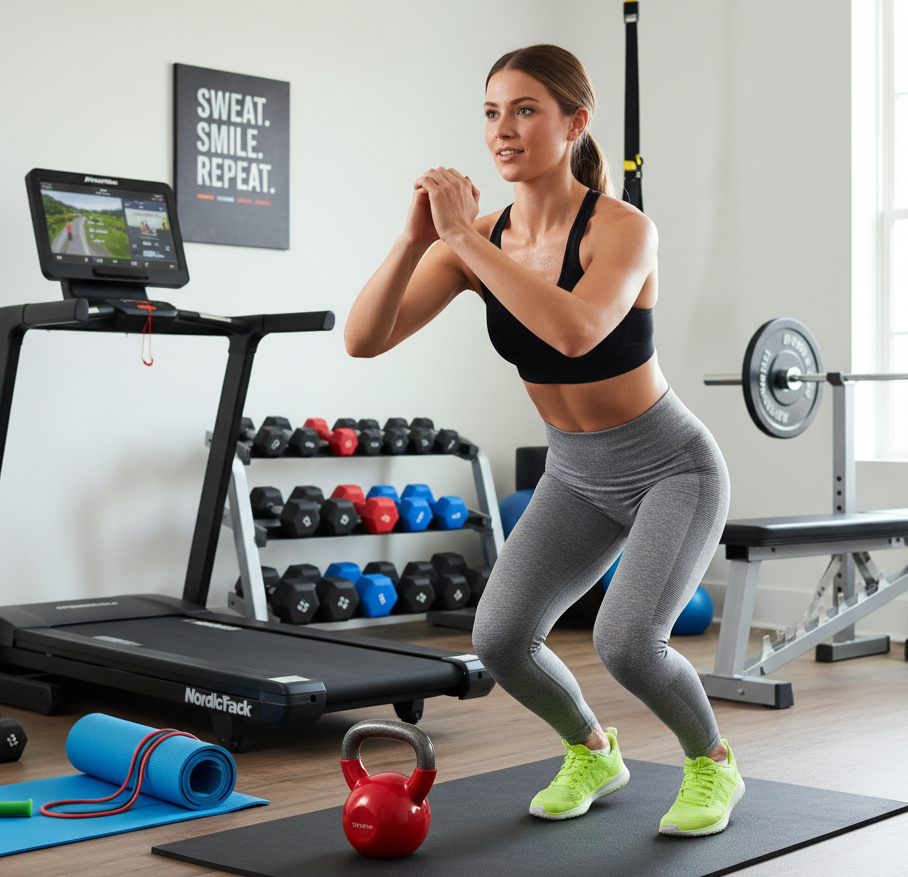In a world increasingly focused on health and wellness, the demand for sports and fitness equipment has skyrocketed. From home gyms to specialized gear for niche sports, the market is booming. Whether you’re a seasoned athlete looking to upgrade your gear, a beginner building your home gym, or a business aiming to tap into this lucrative market, understanding the intricacies of selling and buying sports and fitness equipment online is crucial. This comprehensive guide will walk you through everything you need to know, from market trends to effective strategies, helping you navigate this dynamic industry with confidence.
The Booming Market for Sports & Fitness Equipment
The global sports and fitness equipment market is a multi-billion dollar industry, and its growth has been significantly accelerated by the COVID-19 pandemic. As gyms closed and people were forced to stay at home, millions turned to home workouts, leading to an unprecedented surge in demand for everything from dumbbells and resistance bands to treadmills and stationary bikes. This shift has not only normalized home fitness but has also created a vibrant online marketplace for new and used equipment.
For sellers, this presents a golden opportunity. The market is diverse, catering to a wide range of budgets and fitness goals. You can specialize in high-end, professional-grade equipment, or focus on affordable, entry-level gear. You can also target specific niches, such as yoga, CrossFit, or outdoor sports. The key is to understand your target audience and tailor your offerings to their needs.
For buyers, the online marketplace offers unparalleled convenience and selection. You can compare prices from multiple retailers, read reviews from other users, and find the exact piece of equipment you need without leaving your home. However, it’s essential to be a savvy consumer, as the quality and condition of equipment can vary widely.
Key Strategies for Selling Sports & Fitness Equipment Online
1. Know Your Product and Your Audience
Before you list anything for sale, you need to have a deep understanding of your products. What are the key features and benefits of a particular treadmill? What makes one set of dumbbells superior to another? Your product descriptions should be detailed, accurate, and compelling. Use clear, concise language to highlight the unique selling points of each item.
Equally important is knowing your audience. Are you selling to serious bodybuilders, casual joggers, or families looking for a fun way to stay active? Your marketing and sales approach should be tailored to their specific needs and pain points. Use keywords that your target audience is likely to search for, and speak their language.
2. Master the Art of Product Photography
In the world of e-commerce, a picture is worth a thousand words. High-quality product photography is non-negotiable. Take multiple pictures of each item from different angles. Showcase the equipment in use to help potential buyers visualize themselves using it. For used equipment, be transparent about any wear and tear. Take close-up shots of any scratches, dents, or scuffs to manage buyer expectations and build trust.
3. Write Compelling and SEO-Friendly Descriptions
Your product descriptions are your digital sales pitch. Use strong, action-oriented language to highlight the benefits of your products. Beyond the basic features, talk about how the equipment can help someone achieve their fitness goals. Will this resistance band set help them tone their muscles? Will this yoga mat improve their balance?
To ensure your listings are discoverable on Google, incorporate relevant keywords naturally throughout your descriptions. Think like a buyer: what terms would they use to search for this product? Use a mix of broad and specific keywords, such as “home gym,” “adjustable dumbbells,” and “NordicTrack treadmill with iFit.”
4. Price Your Equipment Competitively
Pricing is a delicate balance. You want to maximize your profit while remaining competitive. Research the market to see what similar new and used equipment is selling for. Consider the condition, brand, and age of the item. For used equipment, be realistic about its value. Buyers are looking for a good deal, and an overpriced item will simply sit on the market.
5. Choose the Right Platform
There are numerous platforms for selling sports and fitness equipment. Each has its own pros and cons.
- E-commerce platforms (Shopify, WooCommerce): Ideal for businesses with a large inventory. They offer full control over your brand and customer experience.
- Marketplaces (Amazon, eBay): High traffic and a built-in audience, but competition is fierce and fees can be high.
- Classifieds (Craigslist, Facebook Marketplace): Great for selling locally and avoiding shipping costs, especially for large, heavy items.
6. Provide Excellent Customer Service
From answering questions promptly to providing clear communication about shipping, excellent customer service is key to building a positive reputation. Respond to inquiries quickly and professionally. Be transparent about your return policy and shipping times. A happy customer is more likely to leave a positive review, which in turn builds trust and attracts new buyers.
Essential Tips for Buying Sports & Fitness Equipment Online
1. Do Your Research
Don’t buy on impulse. Read reviews from multiple sources. Check out video demonstrations and unboxing videos on YouTube. Look for information on the brand’s reputation, warranty, and customer support.
2. Understand Your Needs
Before you start shopping, define your fitness goals and needs. Are you a runner looking for a treadmill, or a weightlifter in need of a power rack? Consider your budget, the space you have available, and your current fitness level.
3. Ask Questions
If you’re buying from a private seller on a platform like Facebook Marketplace, don’t be afraid to ask questions. Inquire about the item’s age, how often it was used, and if there are any known issues. Ask for a video of the equipment in operation if possible.
4. Inspect the Equipment
If you’re buying locally, always inspect the equipment in person before you finalize the purchase. Check for any signs of damage, listen for unusual noises, and test all functions to ensure they are working properly.
Conclusion
The online marketplace for sports and fitness equipment is a thriving ecosystem, offering immense opportunities for both buyers and sellers. By understanding the market, implementing smart strategies, and prioritizing customer satisfaction, you can successfully navigate this landscape. Whether you are building a full-fledged e-commerce business or simply looking to sell a single piece of used gear, the principles of clear communication, quality representation, and competitive pricing will be your keys to success. With the right approach, you can turn your passion for fitness into a profitable venture and help others on their own journey to health and wellness.






